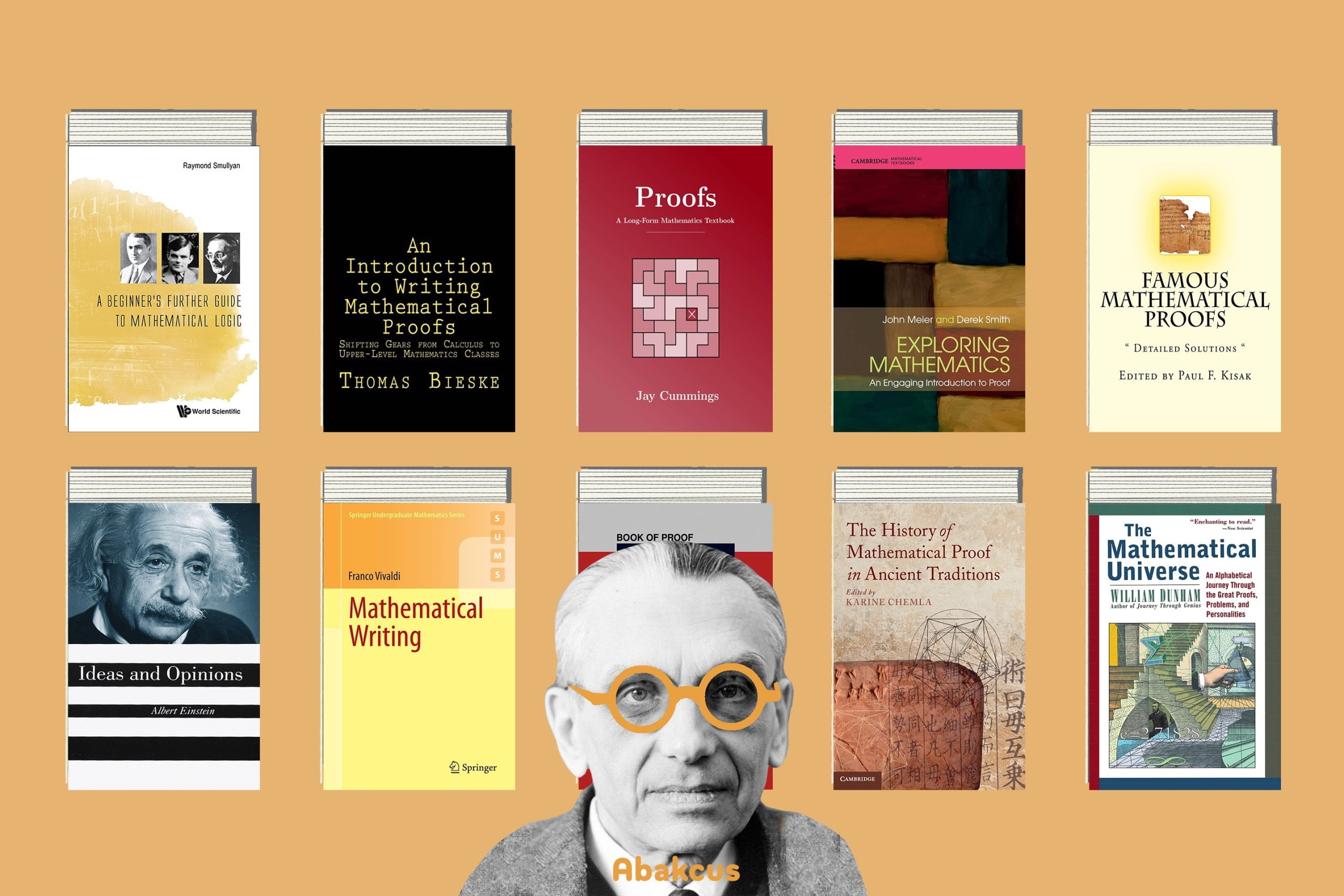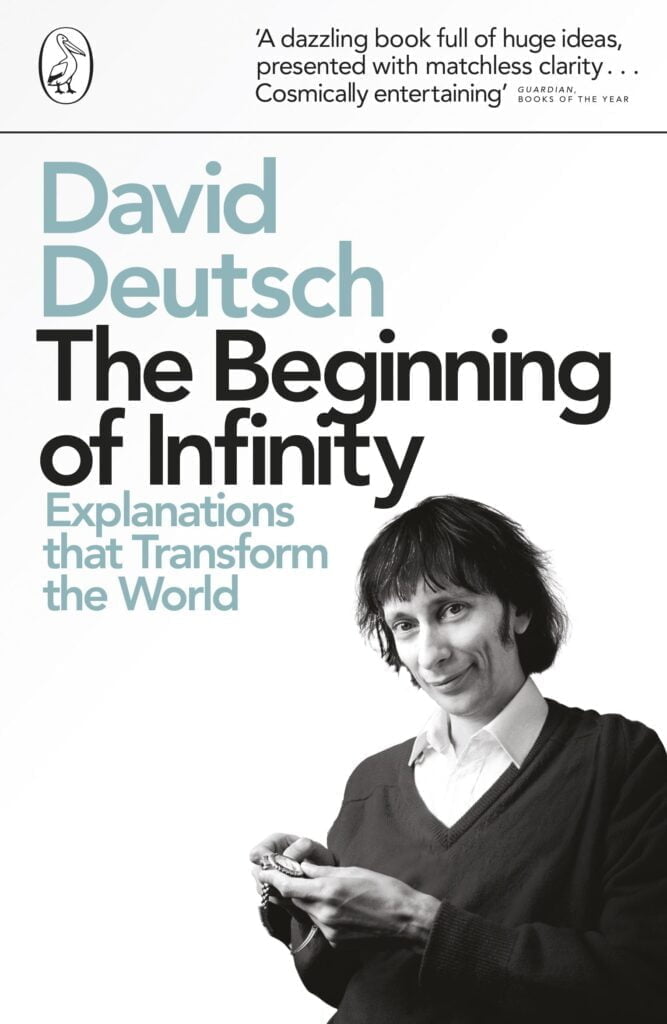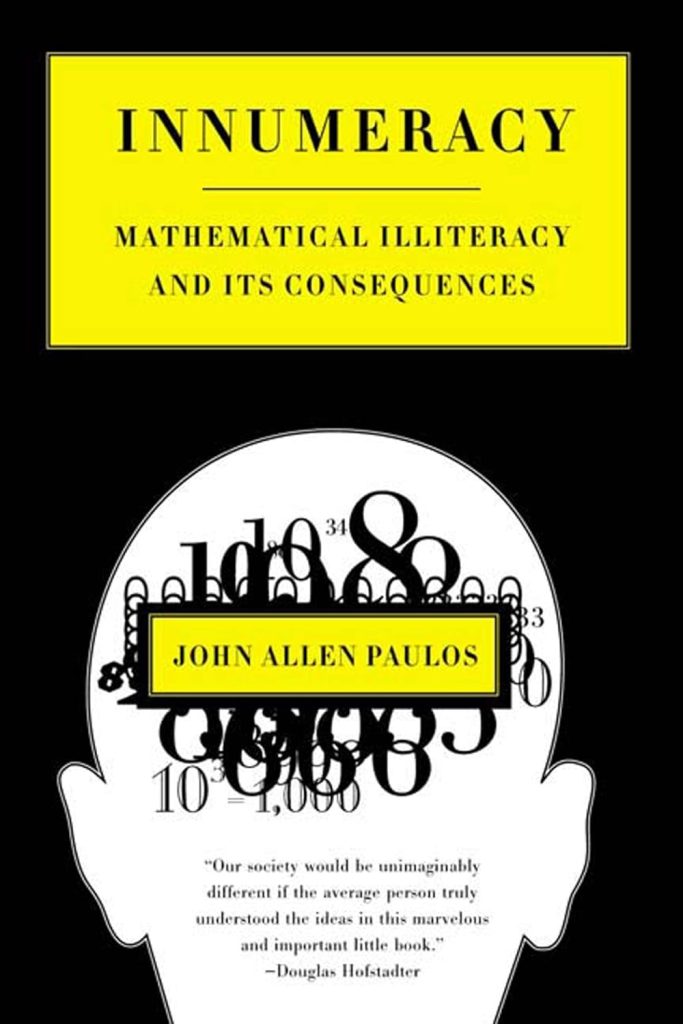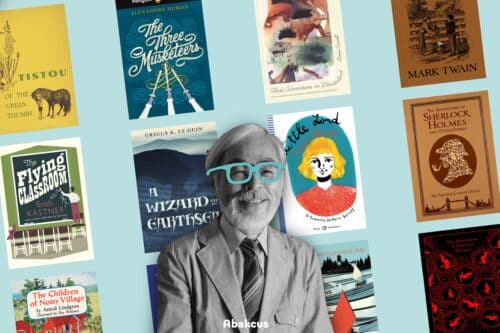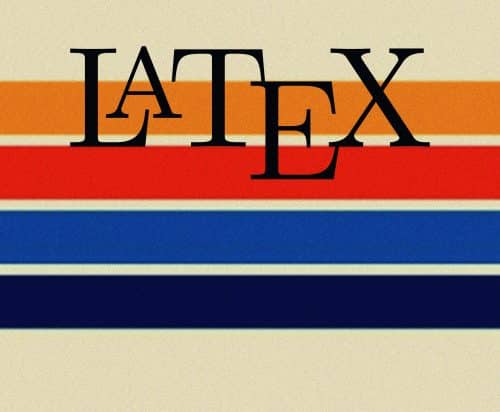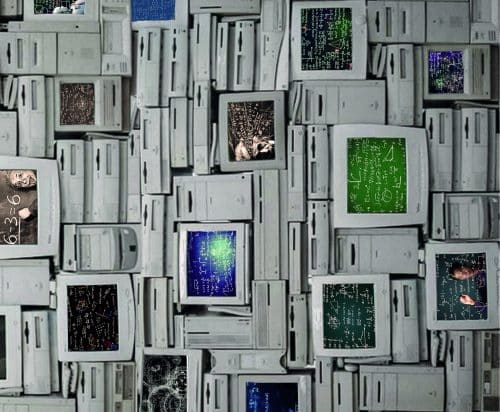Have you ever considered learning how to think mathematically? Using math proofs requires logical reasoning, problem-solving skills, and the ability to make connections between concepts. By reading math books to learn mathematical proofs, you can unlock the power of this type of thinking and gain valuable insight into a variety of topics. Below, you will find 70 best math books to learn mathematical proofs.
The Benefits of Learning Math Proofs
Math proofs are used in various fields, such as engineering, economics, computer science, physics, and mathematics. Learning to think mathematically will benefit your studies in these fields and give you an edge in other aspects of life, such as problem-solving, decision-making, and critical thinking. Mathematical proofs provide a systematic way to analyze problems so that you can come up with solutions quickly and accurately.
Math Books to Learn Mathematical Proofs
Math books are essential if you want to learn mathematical proof. These books provide an easy-to-understand approach to understanding the fundamentals behind math proofs. They often include step-by-step instructions on how to solve problems as well as visual demonstrations of how these concepts work together. Reading these books is key to developing your skills in mathematical proof because they provide an accessible entry point into more advanced topics like abstract algebra or number theory.
While math books are great for getting started with learning mathematical proof, they have their limitations when it comes to tackling more complex problems. As you progress further down the road with studying math proofs, you must supplement your knowledge with online resources such as YouTube tutorials or online courses that give you a more comprehensive overview of various areas within mathematics.
Additionally, engaging in practice questions can help solidify your understanding and hone your skills when it comes to using logic and reasoning for problem-solving.
Mathematical proof is an invaluable skill that can be applied across multiple fields. It provides a framework for analyzing problems while helping develop your problem-solving abilities and critical thinking skills, which are transferable across many different domains in life. To get started with learning math proof, reading math books is essential as they provide an easy-to-understand introduction to this field while giving step-by-step instructions on how to solve various types of problems. However, as one progresses further into this area, more advanced resources should be utilized, such as online tutorials or courses along with practice questions which will help hone one’s understanding and application within this area even further!
Below, you can find 70 best math books to learn mathematical proofs. If you enjoy this book list, you should also check 30 Best Math Books to Learn Advanced Mathematics for Self-Learners.
Before I get started, I would like to suggest Audible for those of us who are not the best at reading. Whether you are commuting to work, driving, or simply doing dishes at home, you can listen to these books at any time through Audible.
In “Structures” (published in 1978), readers are offered a comprehensive exploration of the underlying principles that govern the stability and integrity of various structures that populate our world. From the towering achievements of human engineering like skyscrapers and airplanes to the natural elegance of biological forms such as the horse’s body, this book elucidates the fundamental physical laws that ensure these structures remain upright and functional.
One of the most compelling themes within “Structures” is the delicate balance that keeps these frameworks from collapsing. The book presents a sobering reminder of our built environment’s inherent vulnerabilities and the catastrophic consequences that can ensue from overlooking the minute, yet critical, aspects of structural design and maintenance. Through engaging narratives and case studies, the author demystifies the complex calculations and scientific endeavors that remain largely invisible yet are essential for our safety and well-being.
At its core, “Structures” pays homage to the brilliant minds of scientists and engineers who dedicate their lives to understanding and applying the laws of physics to ensure the durability and safety of both man-made and natural structures. These individuals operate behind the scenes, employing their expert knowledge and unwavering attention to detail to protect us from the potential disasters that could arise from structural failures.
Despite the potentially dense subject matter, “Structures” is remarkably accessible. The author skillfully breaks down intricate scientific concepts into understandable segments, making the world of structural engineering fascinating for both professionals in the field and lay readers alike. The book serves as an enlightening read that enriches one’s appreciation for the unseen work that goes into maintaining the physical structures that surround us.
“Structures” (1978) is more than just a physics book about the physical laws governing our environment; it’s a celebration of human ingenuity and a call to never underestimate the complexity and importance of structural safety. With its engaging narrative and insightful analysis, this book stands as a testament to the critical value of science and engineering in our daily lives. Whether you’re a budding engineer, an architect, or simply someone curious about the world around you, “Structures” offers a compelling glimpse into the unseen forces that shape and sustain our physical world.
Carlo Rovelli’s enthralling read, Seven Brief Lessons on Physics, takes the complexities of modern physics and renders them accessible, even intimate, to the lay reader. In this concise yet profound exploration, Rovelli masterfully guides us through the fundamental principles that construct our universe and our place within it. This is not just a book about physics; it’s a poetic voyage into the heart of existence itself.
At its core, Rovelli’s work is an ode to curiosity and the human spirit’s relentless pursuit of knowledge. He dives into topics that have baffled and fascinated scientists for centuries—Einstein’s general relativity, quantum physics, the bewildering world of elementary particles, and the unfathomable depths of black holes. The discussion extends to the architecture of the universe, teasing apart the fabric of space and time, and tackling the big bang theory alongside the cosmic microwave background in a way that feels new and exhilarating.
What sets Seven Brief Lessons on Physics apart is Rovelli’s unique ability to blend the scientific with the philosophical. He does not shy away from the implications of these complex theories on our understanding of existence. With elegance and simplicity, he invites readers into a contemplative space where science meets philosophy. Through his eyes, we see not just the universe but our place within it—a small yet significant part of a vast, unknowable whole.
Each chapter serves as a window into the often abstract and intimidating world of theoretical physics, rendered with clarity and grace. Rovelli has a gift for analogy and metaphor, which light up his explanations of the most opaque scientific concepts. His writing is infused with a sense of wonder and awe at the beauty and mystery of the cosmos, making the book as moving and poetic as it is informative.
Seven Brief Lessons on Physics is not just a factual recounting of scientific principles; it’s a philosophical treatise on human knowledge and our continuous quest for understanding. Rovelli’s reflections on the nature of knowledge, time, and the human condition resonate deeply, encouraging readers to look at the world with fresh eyes.
For Rovelli, standing on the edge of the known universe is a breathtaking experience—not because of the vastness of what we don’t know, but because of the incredible leaps human knowledge has made in our quest to understand our place in the cosmos. This is the central thesis of the book—it’s a celebration of human curiosity and our tireless endeavor to comprehend the incomprehensible.
In conclusion, Carlo Rovelli’s book, Seven Brief Lessons on Physics, is a masterpiece that distills the essence of modern physics into a form that is not only digestible but deeply moving. It’s a rare gem that manages to illuminate the complexities of the universe while also reflecting on the poignancy of human existence. Whether you’re a seasoned physicist or a curious newcomer to the wonders of the cosmos, this book offers a captivating exploration of the most fundamental questions of existence, making it a must-read for anyone looking to understand the universe and their place within it.
In The Janus Point, Julian Barbour tackles one of physics‘ most enduring and profound questions: What is time? Barbour’s exploration into the nature of time challenges conventional wisdom and presents a compelling thesis that could reshape our understanding of the universe’s foundational principles.
At the heart of “The Janus Point” is Barbour’s contention that our traditional explanations of time, particularly through entropy, are insufficient. He argues that the common narrative—that time flows from a less to a more entropic state—does not adequately account for the conditions that spawned the Big Bang or the fact that the universe continues to expand and grow more complex. To address this, Barbour introduces a novel concept: The Janus Point.
The Janus Point is defined as a pivotal moment in a system of particles in motion, beyond which traditional understandings of entropy and time’s arrow begin to break down. Barbour uses this concept to illustrate a universe not bound by the one-dimensional progression of time from past to future but rather a reality where time’s nature is fundamentally linked to the universe’s expansion and increasing complexity.
Barbour’s thesis is more than a mere academic exercise; it carries radical implications for our understanding of the Big Bang and the very fabric of time itself. If Barbour is correct, we may need to fundamentally rethink our models of the universe’s birth and its temporal evolution. This reevaluation could lead to groundbreaking developments in both theoretical physics and our philosophic relationship with time.
The Janus Point shines brightest when Barbour melds complex scientific theories with accessible explanations, making challenging concepts approachable to a broader audience. However, the book’s ambitious scope occasionally leads to dense passages where the lay reader may find themselves lost in the intricacies of physics jargon and theoretical abstractions.
Julian Barbour’s The Janus Point is a bold, thought-provoking read that dares to question some of physics‘ most deeply held truths. Its exploration of time’s nature and the universe’s structure is as enlightening as it is challenging, offering a fresh perspective on old dilemmas. Though it may occasionally stumble over its complex subject matter, the book remains a crucial read for anyone interested in the cutting-edge of physics and the great unanswered questions of our universe.
In Strange Glow, Timothy Jorgensen takes readers on a fascinating voyage through the history and science of radiation, a phenomenon that, while ubiquitous in our modern lives, remains fraught with misconceptions and fear. As we live surrounded by devices that emit radiation and face global debates on nuclear power and weaponry, Jorgensen’s book comes as a necessary mediation between scientific fact and public perception.
The text is an enlightening mix of narrative history and scientific explanation, making the complex and often misunderstood subject of radiation accessible to a broad audience. Jorgensen’s storytelling prowess shines as he guides readers from the discovery of x-rays by Wilhelm Roentgen to the pioneering work of Marie Curie, and onto the tragic tales of the early victims of radiation exposure.
But Strange Glow is more than a history lesson; it’s a guide for making informed decisions about radiation in our daily lives. Jorgensen does not shy away from discussing the dual nature of radiation—its power to both aid and harm human health. He offers a balanced view that acknowledges the beneficial applications of radiation in medicine, such as diagnostic x-rays and cancer treatments, while also cautioning against unnecessary exposures.
One of the strengths of this book is its ability to demystify the dangers of radiation. Through clear explanations and thoughtful discussion, Jorgensen dismantles many of the fears associated with radiation, grounding his argument in scientific evidence and historical context. He encourages a rational approach to the personal and societal decisions we face concerning radiation, urging us to consider the lessons we have learned over a century of living with this strange glow.
Jorgensen’s narrative is peppered with intriguing anecdotes and profiles of key figures in the development of our understanding of radiation, bringing a human dimension to a subject often reduced to statistics and probabilities. His portrayal of the Curies and other pioneers in the field highlights the human curiosity and ambition driving scientific discovery, as well as the ethical and safety dilemmas that have emerged with those advances.
In conclusion, Strange Glow by Timothy Jorgensen is a compelling physics book that successfully bridges the gap between scientific knowledge and everyday understanding of radiation. It not only chronicles the historical relationship between humans and radiation but also serves as a guide for navigating the modern world, where radiation is both a tool and a threat. This book is a must-read for anyone seeking to understand the real risks and benefits of radiation in our daily lives, making informed decisions based on knowledge rather than fear.
In “Why the Universe Is the Way It Is,” author Hugh Ross takes readers on a fascinating exploration of the cosmos, bridging the often-disparate worlds of science and faith. With a background as an astronomer and a Christian apologist, Ross is uniquely positioned to tackle some of the most profound questions that have puzzled humanity for centuries. His central thesis posits a universe meticulously fine-tuned for life, specifically human life, and he uses this premise to explore the reasons behind the universe’s existence and structure.
Ross adeptly navigates through complex scientific concepts and theological doctrine to provide a coherent and engaging argument that the universe’s design serves multiple specific purposes. One of the book’s strengths lies in its ability to make the intricate dance of cosmological constants and physical laws accessible to readers without a scientific background. Ross’s passion for both astronomy and Scripture shines through, as he uses evidence from the natural world to make a case for a creator-God who intentionally designed the cosmos with humanity in mind.
The book challenges the skepticism often found in scientific circles regarding the plausibility of a creator. Ross confronts this skepticism head-on, not by dismissing science, but by engaging deeply with it. He presents a compelling argument that the universe’s suitability for life is not just a happy accident but rather indicative of a purposeful design. This approach is refreshing and opens up a pathway for dialogue between science and religion, fields often seen as contradictory.
Furthermore, Ross addresses the problem of pain and suffering in a universe supposedly designed by a loving God. He suggests that the very aspects of the cosmos that allow for free will and the possibility of suffering also provide the backdrop against which virtues like courage, sacrifice, and love become meaningful and genuine. This perspective offers readers a possible framework for reconciling the presence of evil and suffering with the concept of a benevolent creator.
“Why the Universe Is the Way It Is” goes beyond mere cosmological speculation, venturing into the realm of human destiny and personal purpose. Ross invites readers to consider not just the how and the what of the universe but the why, steering the conversation toward a deeper reflection on individual and collective existence. This aspect of the book is particularly thought-provoking, as it challenges readers to ponder their place within the cosmic order and God’s broader narrative.
In conclusion, Hugh Ross’s “Why the Universe Is the Way It Is” is a thoughtfully crafted physics book that offers a compelling synthesis of scientific discovery and theological inquiry. It will resonate with those who seek to understand the universe’s complexities without forfeiting the wonder of faith. Whether you approach the book as a skeptic, a believer, or somewhere in between, Ross provides a thoughtful and respectful exploration of why the cosmos might indeed unfold in a manner that suggests purpose, intention, and design. His insights into the universe’s nature and humanity’s role within it are not only illuminating but deeply affirming for anyone wrestling with questions of existence and meaning.
Randall Munroe, the creative genius behind the immensely popular webcomic xkcd, returns with a sequel to his wildly successful book, “What If?. “ In this latest installment, Munroe takes on a fresh batch of bizarre, fascinating, and utterly absurd questions from readers around the globe. “What If? 2” is not just a book; it’s a thrilling expedition into the frontiers of science, imagination, and curiosity.
For those unfamiliar, Munroe has a background in physics and worked for NASA before becoming a full-time webcomic artist. He leverages his scientific expertise to explore hypothetical scenarios that range from the mind-boggling to the downright hysterical. The sequel continues in the same vein as its predecessor, tackling even stranger queries with the help of cutting-edge research and a healthy dose of humor.
Have you ever wondered whether you could ride a fire pole from the Moon back to Earth? Or what would happen if you attempted to cool the Earth’s atmosphere by having everyone open their freezer doors simultaneously? These are the kinds of questions Munroe delights in answering, combining rigorous scientific analysis with drawings that both illustrate complex concepts and entertain.
Whether it’s the logistics of feeding New York City’s population to a Tyrannosaurus rex or the outcome of filling every church with bananas, no question is too outlandish. Munroe consults the latest research, from swing-set physics to the aerodynamics involved in catapulting airliners, to provide answers that are as informative as they are intriguing.
“What If? 2” shines in its ability to make complex scientific principles accessible and entertaining. Munroe’s talent lies in his knack for distilling complex ideas into concise, understandable explanations complemented by his signature stick figure drawings. The book is a testament to the fun that can be found in scientific inquiry and the joy of letting curiosity lead the way.
Beyond the humor and wild hypotheticals, there’s a clear reverence for the scientific method and the pursuit of knowledge. Munroe encourages readers to ask questions, no matter how silly they may seem, demonstrating that learning can be a wildly fun adventure.
Some readers might find the subject matter too whimsical or deem the scenarios too impractical to warrant investigation. However, this critique might miss the point of the book, which is to revel in the absurd and appreciate the scientific pondering it provokes. It’s a celebration of curiosity, after all — not a conventional scientific textbook.
“What If? 2” is an absolute treasure for fans of the first physics book, newcomers to Randall Munroe’s work, or anyone with a curious mind. It blends humor, science, and art in a way that is uniquely Munroe’s. This book is not only a compelling read but also an invitation to marvel at the marvelously weird world of scientific speculation.
In a world where the pursuit of knowledge can sometimes seem daunting or drudgery, Munroe reminds us of the sheer delight in asking, “What if?”
In “Life’s Devices: The Physical World of Animals and Plants,” Steven Vogel presents an engrossing exploration into the realm where biology meets physics. The book serves as a bridge between the non-biological reality that surrounds us and the living organisms that inhabit it, engaging readers with the fascinating ways in which plants and animals have adapted to their environments. Vogel’s ambitious goal is to fundamentally alter our perception of the natural world, encouraging a deeper understanding and appreciation for the sophisticated designs observed in nature.
Life’s Devices adeptly describes the intricate relationship between the physical world and the biological adaptations that enable survival and efficiency among flora and fauna. From explaining why fish swim more rapidly than ducks paddle to unraveling the mystery of how sharks support their bodies with relatively flimsy skeletons, Vogel invites readers into a captivating dialogue about the wonders of biomechanics. His comparison between the reasons behind trees uprooting rather than breaking, and the remarkable ability of a mouse to survive falls from virtually any height, illuminates the extraordinary and often overlooked feats of engineering accomplished.
What sets this book apart is not just its comprehensive coverage of both animal and plant life, with examples spanning every major group, but also its accessibility to readers without a deep background in science. Vogel’s writing is clear, playful, and imbued with a sense of wonder that is infectious. The inclusion of illustrative problems and suggestions for simple experiments using common household materials further demystifies the subject matter, making the principles of biomechanics relevant and engaging for the lay reader.
“Life’s Devices: The Physical World of Animals and Plants” excels as both an educational resource and a source of entertainment. Its approach is grounded in scientific rigor yet suffused with a narrative quality that beckons the curious mind. For professionals in the fields of biology, physics, and engineering, the book offers insightful references to recent work in the field of biomechanics. Yet, its appeal is not limited to the academic audience alone. Anyone with an interest in the natural world will find this book a treasure trove of insights, inviting them to look at the familiar environs with newfound intrigue and respect.
Vogel’s assertion that physical factors form both constraints and opportunities for evolutionary processes provides a compelling lens through which to view life on Earth. This perspective not only enriches our understanding of the mechanics underpinning the natural world but also highlights the creativity inherent in nature’s solutions to survival challenges.
In conclusion, “Life’s Devices: The Physical World of Animals and Plants” by Steven Vogel is a masterful work that transcends the boundaries between disciplines. It is a testament to the author’s ability to convey complex scientific concepts in an accessible and engaging manner. Vogel has indeed achieved his “immodest aim” of changing how we view our immediate surroundings, inviting readers to wonder, explore, and appreciate the physical ingenuity of life’s devices.
In the world of architecture, few names are as revered as Louis Kahn—his ethos and philosophy have shaped modern architectural thought in profound ways. It is this luminary figure that Michael Merrill seeks to explore in his meticulously curated volume, Louis Kahn: The Importance of a Drawing. Through Merrill’s discerning eye, readers are offered an unprecedented exploration into Kahn’s process and philosophies as articulated through the medium most vital to his work: drawing.
Kahn’s assertion that drawings serve as the “architect’s language” forms the foundation of Merrill’s investigation. This notion is neither trivialized nor understated in the book; instead, Merrill elevates the idea, reinforcing just how integral these sketches, blueprints, and doodles were to Kahn’s practice. Far more than mere precursors to physical structures, these drawings are presented as the embodiments of Kahn’s architectural deliberations—his silent yet profoundly articulate speakers.
The strength of Merrill’s work lies not only in its visual opulence, with over 900 high-quality reproductions gracing its pages, but also in the depth of its scholarly research. Based on unprecedented archival research, Merrill’s narrative transcends a mere collection of images. Each chapter, each section, is a close reading that peels back layers of Kahn’s thoughts, allowing us to witness the architect’s mind at work.
What is particularly striking about this book is the lens through which Kahn’s legacy is viewed. By focusing on the drawings, Merrill invites readers to appreciate the unfiltered moments of creativity that precede the physical manifestation of ideas. These drawings, with all their nuances, become a testament to Kahn’s complex creative imagination, offering insights into the architect’s internal dialogue, his moments of uncertainty, and his bursts of visionary clarity.
For students and lovers of architecture, Louis Kahn: The Importance of a Drawing serves as both a visual feast and a scholarly treasure trove. Its pages challenge the reader to consider the drawing not as a mere step in the architectural process but as a pivotal space of invention and reflection. Merrill does not simply catalog Kahn’s drawings; he enlivens them, imbuing them with the weight and significance they held for Kahn himself.
Yet, the accessibility of Merrill’s prose ensures that the book’s appeal is not confined to the academically inclined. Anyone with an appreciation for art, design, or the complexities of creative thought will find value in this in-depth study. It demystifies the architectural genius of Louis Kahn while simultaneously elevating the humble drawing to its rightful place as a primary source of understanding and inspiration.
In conclusion, Louis Kahn: The Importance of a Drawing is more than a book; it’s an immersive experience into the mind of one of architecture’s greatest figures. Edited with both precision and passion by Michael Merrill, it stands as a monumental tribute to Kahn’s belief in the drawing as the architect’s most honest form of expression. This book is not just an essential addition to the libraries of architects and students—it belongs on the shelves of anyone who believes in the power of drawing to reveal the depths of human creativity.
In “The Beginning of Infinity,” physicist David Deutsch delivers a profound narrative that stretches the very fabric of our comprehension, intertwining the essence of human progress with the infinite potential of explanations. Deutsch, with his eloquent prose, has not merely penned a book; he has orchestrated an intellectual symphony that resonates with the rhythm of discovery.
At the heart of the book lies a strikingly optimistic view – that through the evolution of good explanations, humanity is capable of achieving unbounded progress. Deutsch ambitiously tackles themes ranging from the philosophy of science, quantum physics, to the underpinnings of art and culture, making an audacious claim—knowledge is infinite.
His exploration dives into the importance of improving our understanding of the world, not only in the scientific arena but across the tapestry of human endeavor. By refining our explanations and discarding those that fall short, we can steer towards a future limited only by our imagination.
Deutsch’s argument pivots on the belief that the pursuit of knowledge through scientific inquiry is paramount. To him, every problem that is not forbidden by laws of nature is achievable, given the right knowledge.
Deutsch’s philosophical lens does not stop at the surface; it penetrates to the core of myriad topics to illustrate his thesis. Whether discussing the principles of creativity in art, the ethics of moral choices, or the governance systems of societies, he maintains an unwavering confidence in progress through understanding.
His writing flits effortlessly between accessible analogies and heady scientific concepts, ensuring that his ideas resonate with both casual readers and the scientifically inclined. Herein lies the book’s brilliance—it is as much a treasure for the layman pondering the trajectory of human progress as for the scientist contemplating the deeper meaning behind quantum physics.
The book, however, is not without its demands on the reader. The sheer breadth of subjects covered requires an attentive mind, and some of the deeper scientific discussions might seem daunting at first glance. Nevertheless, like a seasoned teacher, Deutsch guides us through with clarity and insight.
“The Beginning of Infinity” is not simply a book but a manifesto calling for the recognition of the power of explanations and the relentless pursuit of knowledge. Where some might see insurmountable barriers, Deutsch sees horizons teeming with possibility.
This challenging yet rewarding read serves as a beacon of hope for those who believe in the unending quest for knowledge. It is a reminder that our capacity for understanding is not just a tool for survival but a gateway to the vastness of infinity – a beginning that never ends.
For those intrigued by the limitless potential of human thought and discovery, “The Beginning of Infinity” is more than a recommendation—it is an invitation to partake in a visionary conversation about the improbable odyssey of progress, knowledge, and the boundless capacity of the human spirit.
In an era where numbers dictate decisions from the boardroom to the living room, John Allen Paulos’s book, “Innumeracy: Mathematical Illiteracy and Its Consequences,” remains a significant and eye-opening work.
Paulos confronts a bothersome paradox of society: The widespread issue of innumeracy, an unfamiliar term for a familiar affliction of being unskilled with numbers. Despite advanced education systems, there lies a concerning level of mathematical ignorance, one that Paulos contends has severe repercussions for individuals and for societies at large.
“Innumeracy” shines a light on the problematic outcomes of mathematical ignorance. Key themes emerge from Paulos’s exploration of the topic, including the impact of poor numeral literacy on public policy decisions, which he argues are often made based on misunderstood statistics and probabilities. This misunderstanding reaches into personal lives as well, skewing perceptions of risk, health, and finance.
Additionally, the book taps into the vein of susceptibility humans have towards pseudoscience and superstition—propensities that flourish in soil tilled by numerical illiteracy. It’s not merely about the inability to handle complex algebraic equations but about failing to grasp the essence of numbers affecting daily life.
Paulos peppers his explanations with engaging anecdotes and comparisons that lay bare the absurdity of certain widely held beliefs and practices. Through examples ranging from election results and sports statistics to less innocuous instances like stock frauds and psychic predictions, he illustrates just how innumeracy can distort reason and lead to illogical conclusions.
What’s striking about “Innumeracy” is its profound relevance over three decades after its first publication. It serves as an enduring reminder that understanding numbers is not merely an academic requirement but a critical part of informed decision-making and rationality. Paulos brings out the connection between innumeracy and discrimination, showing how it can perpetuate biases in the guise of flawed data interpretation.
The book doesn’t just critique; it presents the idea that numeracy is an attainable goal, urging educational systems and cultural attitudes to change. There’s a call to celebrate numerical literacy as a component of being worldly and cultured, equating it to literacy in reading and writing.
“Innumeracy” is a profound, entertaining, and sometimes sobering look at the consequences of mathematical illiteracy. It’s a compelling call to arms for society to recognize the beauty and utility of numbers. John Allen Paulos doesn’t just educate; he advocates for a way of thinking that could transform our society’s approach to information, policy, and personal life.
Those who open “Innumeracy” will find themselves entertained and educated, but above all, challenged to look at numbers and their impact in a refreshing and crucial light. It is, without doubt, a must-read for anyone looking to understand the invisible but powerful role that mathematics plays in our world.

